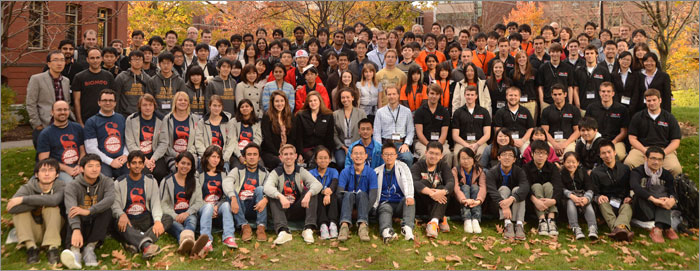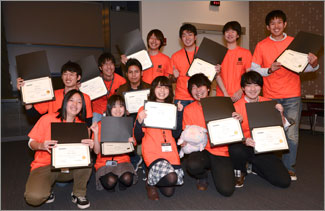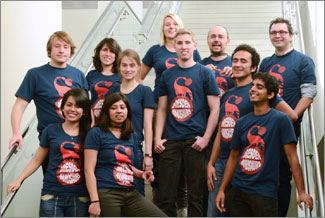
“Team Sendai” heads back to Tohoku University in Sendai, Japan, with the grand prize for the second annual BIOMOD competition in hand. This was the second year for BIOMOD, an international biomolecular design competition sponsored by the Wyss Institute, with additional support from Autodesk and Mathworks.
BIOMOD, which took place November 3-4 at Harvard’s campus in Cambridge, MA, provides undergraduates an opportunity to engineer biological molecules into nanoscale “machines” that can be used for any number of scientific and technological purposes. Seventeen teams comprised of more than 120 students hailed from around the world and presented the projects they’ve been working on since last spring to an esteemed panel of judges.

BIOMOD is the brainchild of Shawn Douglas, Ph.D., who is now an assistant professor at the University of California, San Francisco (UCSF). “It’s just amazing to see the results of all the hard work that the students put in over the summer,” said Douglas, who did a lot of his own pioneering DNA nanomachine work while at the Wyss Institute.
For many, this was their first scientific presentation in front of an international audience. “BIOMOD offers these students a unique and supportive environment to really build their confidence in not only developing cutting-edge, creative projects, but in presenting them publically and learning how to defend their ideas,” Douglas said.

Check out Team Sendai’s winning project, as described in their amusing YouTube video. The team used a technique called DNA origami to create a cylindrical “cell gate” that they hope could one day deliver drugs right the target spot in the human body, remove harmful toxins from the body, and more. The first runner-up was the “Dresden Nanosaurs” team from Germany, who designed a novel signal-driven tethering system using DNA origami and vesicular transport — which could also have applications for targeted drug delivery.
Other innovative ideas presented by the students ranged from a modified DNA “shell” that one team hopes can “change the world” via potential applications in dialysis and environmental cleanup; to new “molecular walkers” designed using a protein called kinesin; to the world’s smallest DNA “computer tablet,” designed using a combination of molecular programming and DNA origami techniques.
For more information about BIOMOD, visit http://biomod.net/